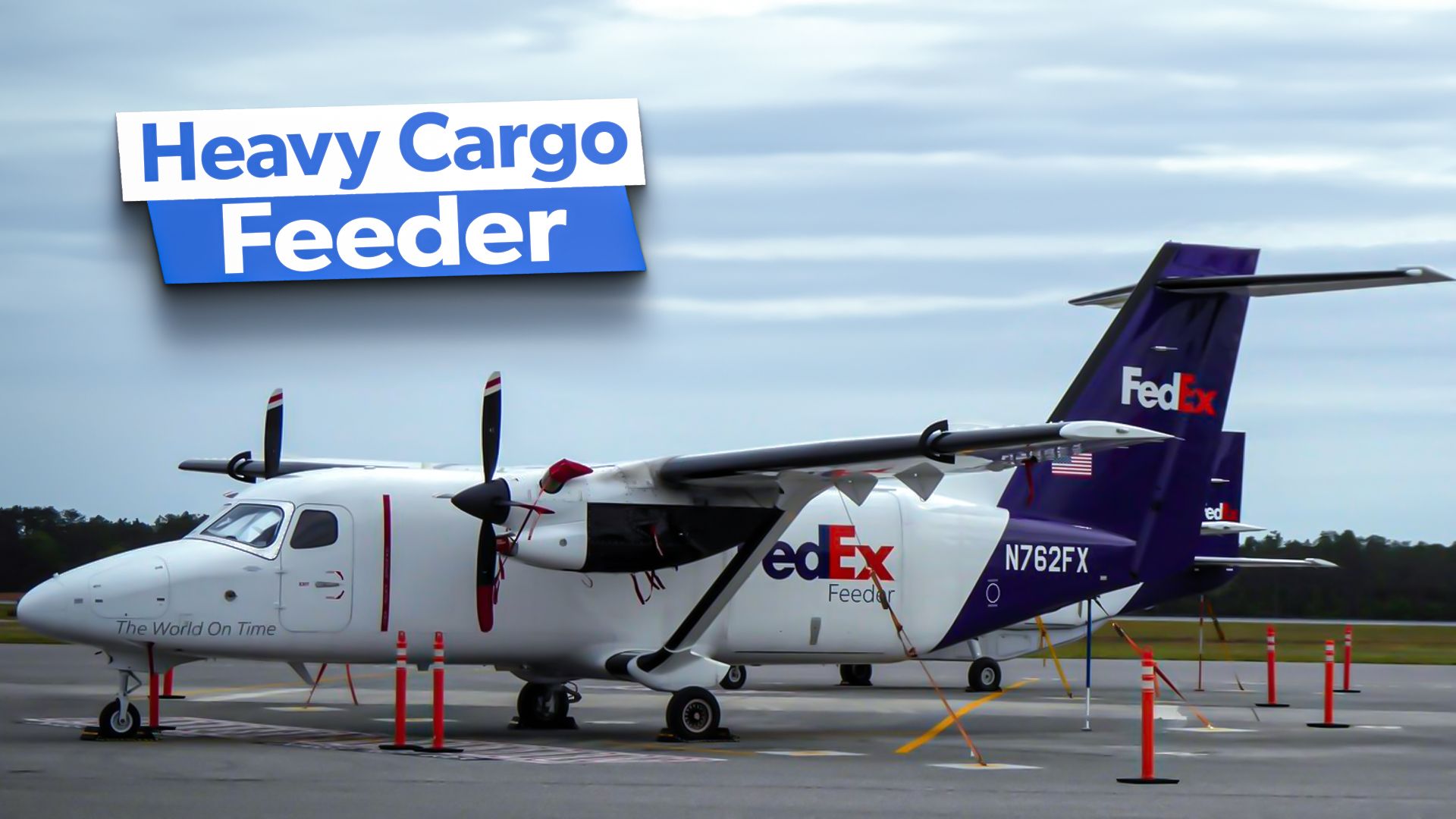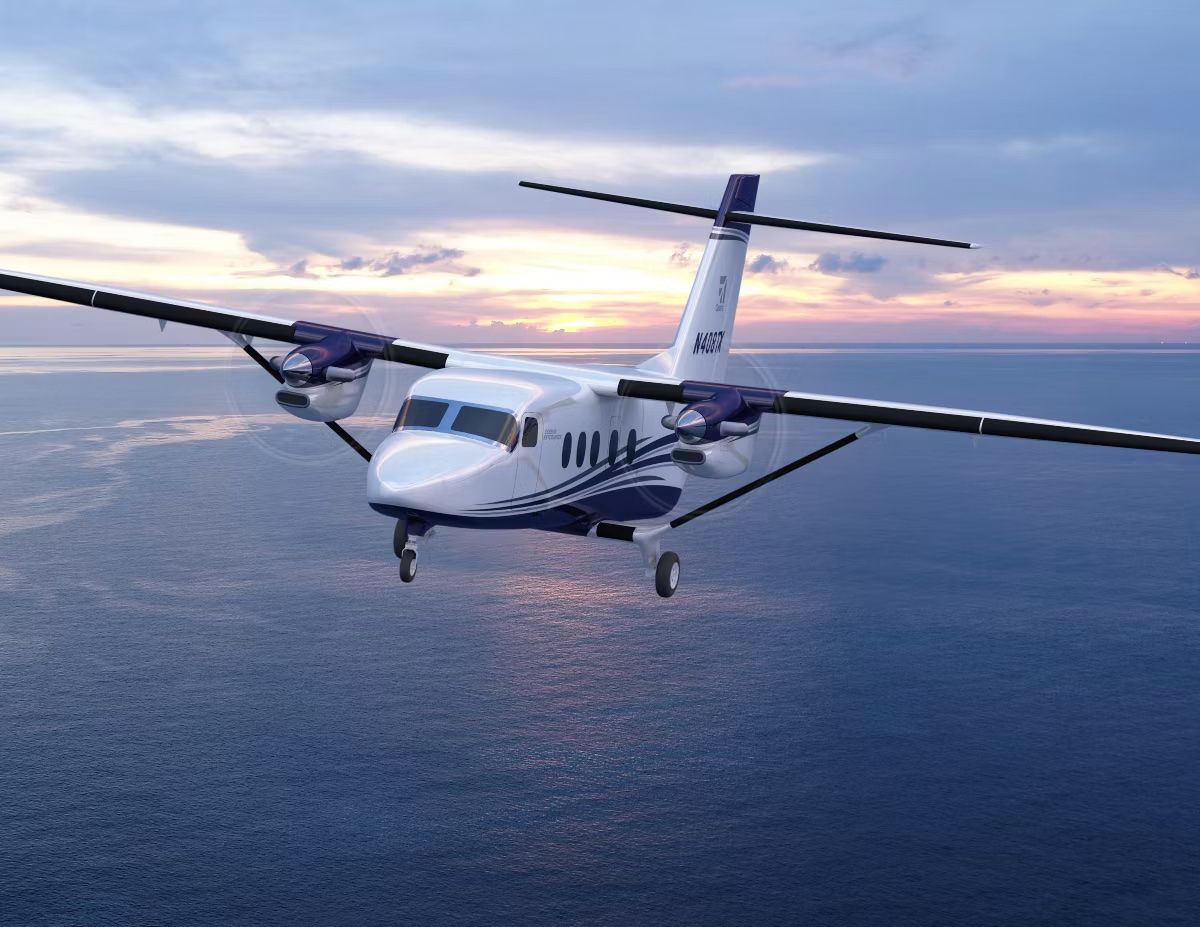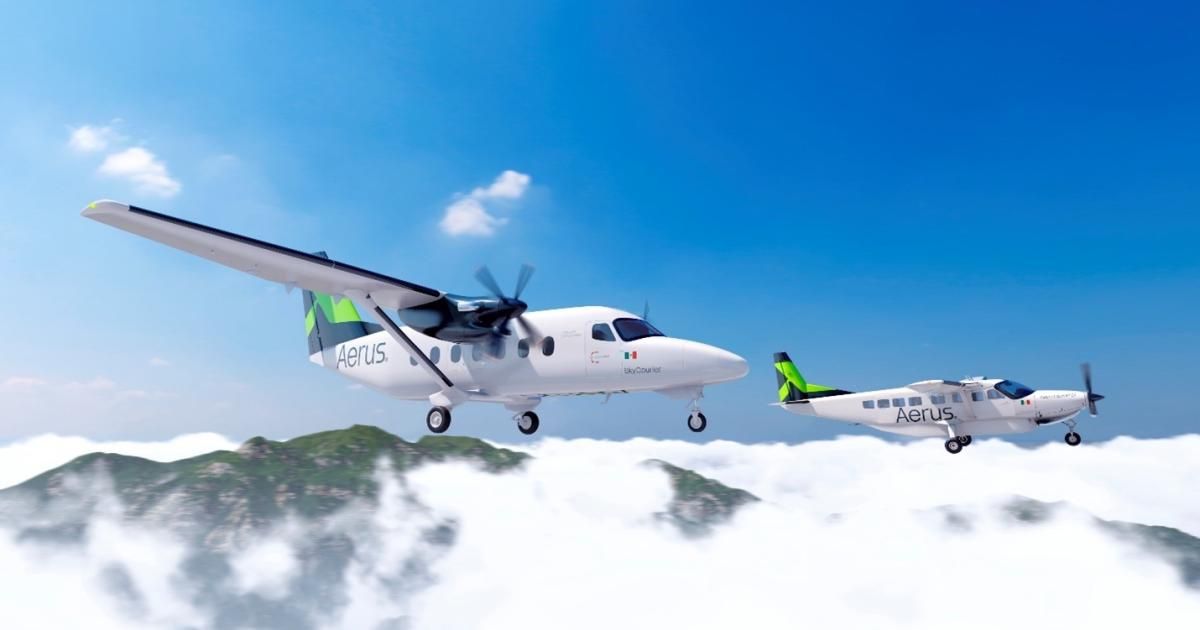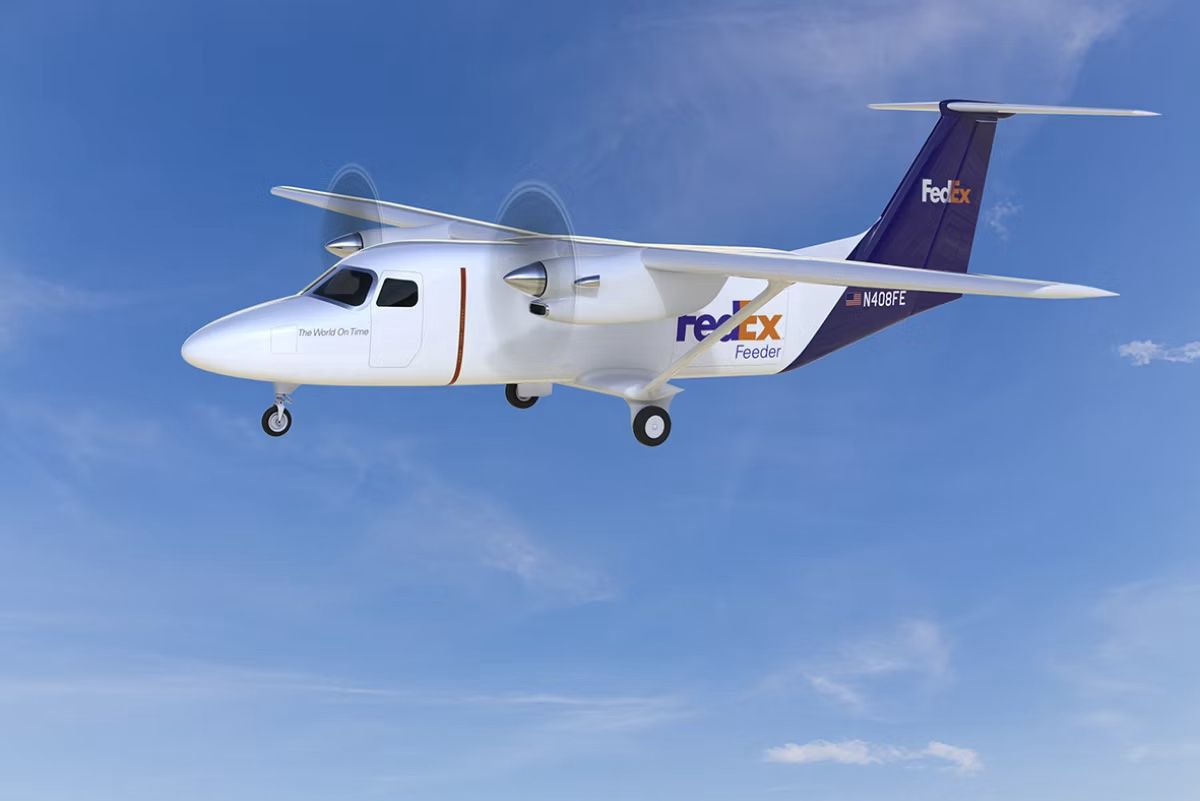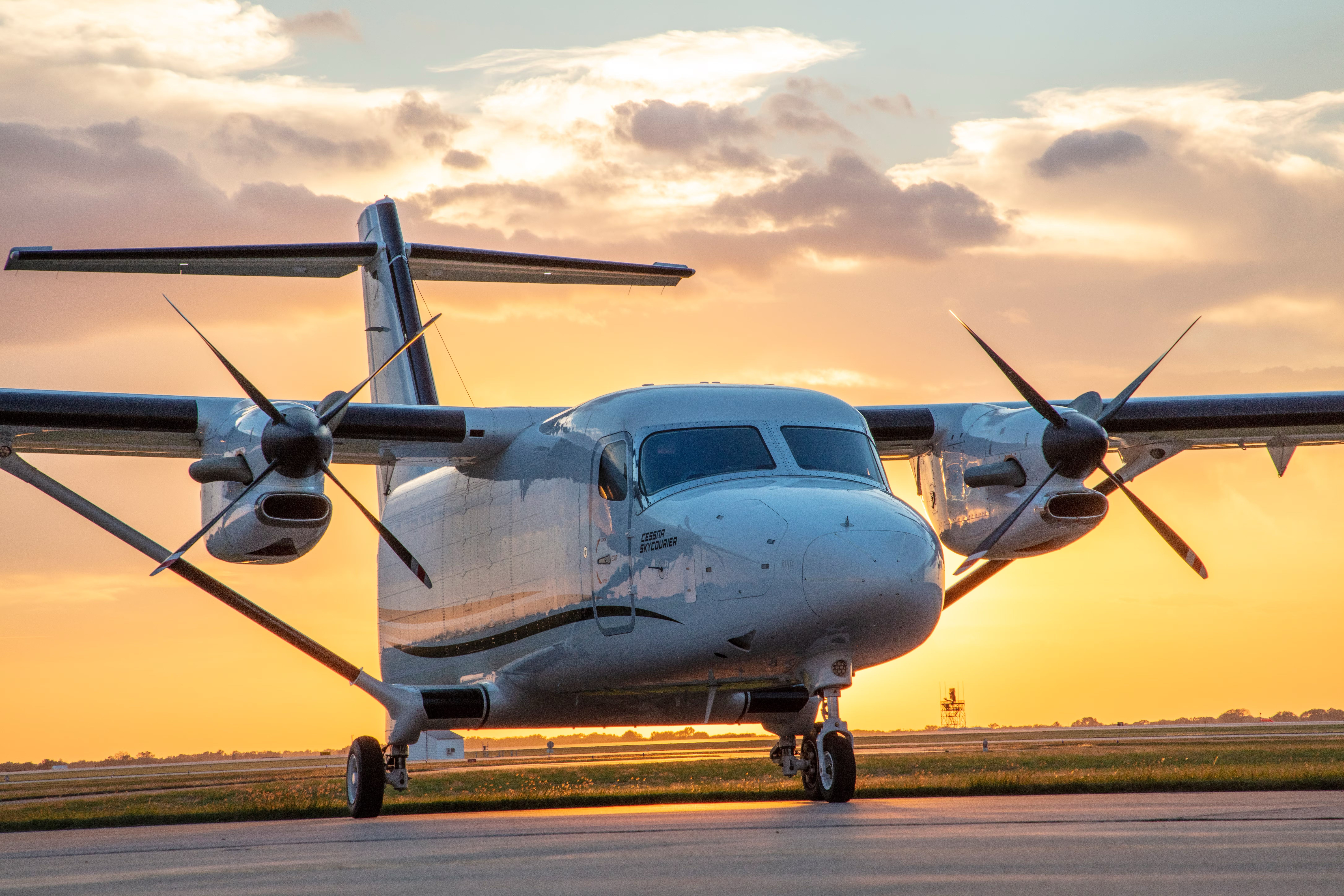Summary
- The Cessna SkyCourier offers versatile configurations for cargo, passenger, or combi operations.
- The aircraft boasts impressive cargo capabilities, with capacity for 3 LD3 units.
- High-performance engines provide a range of 380 nm, enabling adaptive mission capabilities.
The Cessna 408 SkyCourier
remains one of the few true all-purpose utility aircraft to be in serial production today, having been launched back on November 28th, 2017. Built by the Cessna subdivision of manufacturer Textron Aviation, the plane falls in a long line of turboprop utility, private, general-purpose, light cargo, and regional passenger aircraft.
The first customer to order the SkyCourier was cargo airline FedEx Express, which kickstarted the aircraft’s commercial career with an order for 50 planes, set to be used for its light cargo fleet, FedEx Feeder. The plane took to the skies for the first time in May 2020, amid the depths of the COVID-19 pandemic, and took two more years to be fully certified by the FAA on March 11th, 2022.
Photo: Textron Aviation
The carrier finally took delivery of its first commercial model on May 9th, 2022, and shortly after began rolling the plane out across its commercial network. With a pair of turboprop engines, high wings, and an impressive capacity for an aircraft of its size, the SkyCourier has already established itself as a crucial workhorse for the airlines that operate it.
With over 30 aircraft having been built as of September 2024, the SkyCourier has already begun to prove its long-term commercial viability as an endlessly customizable utility plane. Let’s take a deeper look at five unique things the SkyCourier has to offer.
1
A functional and reliable passenger transport
Passenger capacity: 19
When one has purchased the Cessna 408 SkyCourier, there are multiple different ways in which the manufacturer can configure the aircraft before delivery. The three primary setups are as follows:
- A dedicated cargo aircraft
- A combination (combi) cargo and passenger aircraft
- A 19-passenger passenger plane
Most operators who have so far ordered the SkyCourier do intend to use it, at least in some capacity, as a dedicated cargo aircraft. However, some customers do have a slightly different vision in mind for the versatile plane, which can be deployed as an efficient regional aircraft.
Photo: Textron Aviation
Mexican regional airline Aerus, which commenced operations in April 2023 according to Mexico Daily News, has maintained an order for seven SkyCouriers, which it plans to deploy across its regional network. With 14 different destinations and growth on the horizon, Aerus will certainly be excited to welcome these new aircraft to its fleet. The SkyCouriers will join the carrier’s current fleet of Cessna Grand Caravans, which will eventually be replaced by the all-electric Eviation Alice aircraft.
2
Impressive cargo capabilities
LD3 capacity: 3 units
As the earliest and most important SkyCourier customers were dedicated cargo airlines, the ability of the aircraft to perform in this capacity proved integral to its long-term viability. Thus, features such as a spacious, flat cabin and a large cargo loading door were prioritized, allowing the plane to serve as a viable freighter.
Photo: Textron Aviation
The aircraft’s design is optimized for flexibility, allowing for quick transitions of cargo loading and unloading aided by patented fasteners and releases. Additionally, the plane’s high-wing design was utilized to support the transport of oversize cargo. Here are some cargo specifications for the SkyCourier from manufacturer Cessna:
|
Category: |
Cessna 408 SkyCourier specification: |
|---|---|
|
Maximum takeoff weight (MTOW): |
19,000 lbs |
|
Empty freighter weight: |
11,000 lbs |
|
Max cargo payload: |
6,000 lbs |
3
Valuable range
Typical range: 380 nautical miles
When it comes to cargo aircraft, especially those that serve on relatively short-range regional aircraft, the importance of having extended-range capabilities is important, but not entirely for the reason you might expect. Let’s begin by taking a look at FedEx Feeder, the most important fleet that the SkyCourier is set to join. Here are some examples of the routes that the US-based cargo operator flies:
- Manchester-Boston Regional Airport (MHT) to Presque Isle International Airport (PQI)
- Portland International Jetport (PWM) to Bangor International Airport (BGR)
- Memphis International Airport (MEM) to Huntsville International Airport (HSV)
Photo: FedEx
Almost all of these routes are beneath the SkyCourier’s typical range threshold, making it seem like the range of nearly 400 nautical miles is excessive. However, when one considers the operational simplicity of only having to fuel an aircraft once, the importance of this extra range becomes more apparent.
4
Powerful engines
Total output: 2,220 horsepower
In order to achieve such impressive performance metrics, the manufacturer has equipped the SkyCourier with incredibly capable engines. The pair of Pratt & Whitney Canada PT6A-65SC turboprop engines are each rated at 1,110 horsepower.
These engines are equipped with 4-bladed McCauley Blackmac aluminum propellers, which help push the plane up to its top speeds. The plane typically cruises at around 250 miles per hour, and the powerful engines allow it to takeoff with just 3,660 feet of runway.
5
Unmatched versatility
The aircraft was made to tackle any mission at hand
One of the key assets the SkyCourier brings to the table is its unmatched ability to shift between different missions and operations. A few examples of such versatility include:
- A gravel runway kit that was approved in 2023
- Bulkheads and passenger seats can be removed in as little as one hour
Photo: Cessna
FedEx can be credited with motivating many of these capabilities, which Textron Aviation added to help satisfy the major cargo carrier’s demands for a versatile aircraft. With the aircraft brought to the market so recently, there is truly no telling what innovations the manufacturer may choose to add to the SkyCourier next.

